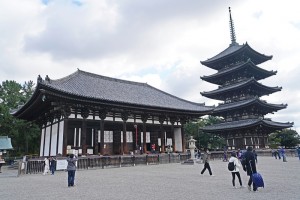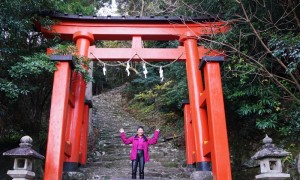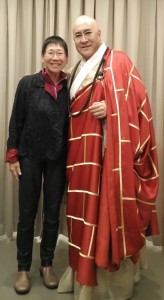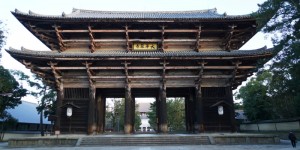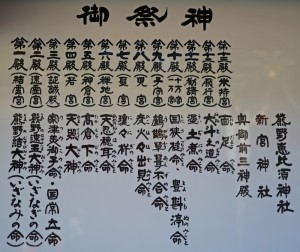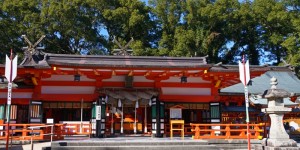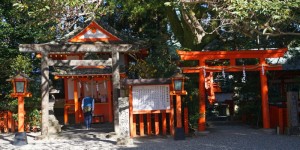December 28 – 31, 2016: Kyoto, Nara, Kiikatsuura- Kumano Sanzan
I climbed Mt. Fuji last August and had no plan to return in 2016 until I learnt about an opera performance “Monk Ganjin Sailing East” in Kyoto on December 28. My friend TIAN Hao Jiang would be playing the role of Ganjin. After seeing the superb performance, I spent a week visiting several World Heritage temples in Nara and Shinto shrines in Kumano Sanzan and Ise in Kii Peninsula.Trip Plan
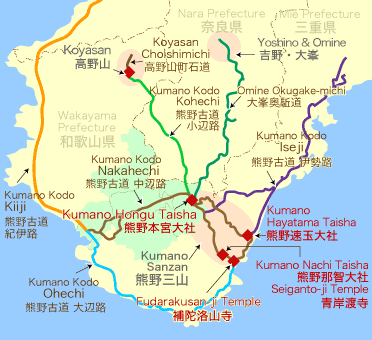 The main purpose of my trip was to see the new opera in Kyoto (京都) on December 28. As Nara (奈良) has some of the best preserved wooden temples, buildings and sculptures built in Tang Dynasty architecture and styles, I love to visit this old capital of Japan. Another highlight would be the Kii Peninsula, the largest peninsula in Japan which is famous for its series of ancient pilgrimage routes crisscrossing the peninsula. For centuries, pilgrims have travelled along the Kumano Kodo 熊野古道to the sacred site ‘Kumano Sanzan’ 熊野三山 (or Three Grand Shrines of Kumano) namely the Kumano Hongu Taisha 熊野本宮大社, Kumano Nachi Taisha 熊野那智大社 and Kumano Hayatama Taisha 熊野速玉大社.
The main purpose of my trip was to see the new opera in Kyoto (京都) on December 28. As Nara (奈良) has some of the best preserved wooden temples, buildings and sculptures built in Tang Dynasty architecture and styles, I love to visit this old capital of Japan. Another highlight would be the Kii Peninsula, the largest peninsula in Japan which is famous for its series of ancient pilgrimage routes crisscrossing the peninsula. For centuries, pilgrims have travelled along the Kumano Kodo 熊野古道to the sacred site ‘Kumano Sanzan’ 熊野三山 (or Three Grand Shrines of Kumano) namely the Kumano Hongu Taisha 熊野本宮大社, Kumano Nachi Taisha 熊野那智大社 and Kumano Hayatama Taisha 熊野速玉大社.
There are four routes leading to Kumano Sanzan namely Nakahechi, Ohechi. Kohechi and Iseji Routes. The Kumano Kodo and Kumano Sanzan, along with Koyasan and Yoshino and Omine, were registered as UNESCO World Heritage sites in 2004 as the ”Sacred Sites and Pilgrimage Routes in the Kii Mountain Range”.
Travel by train in Japan is a pleasure. I therefore bought a two day Kansai Pass (¥4,300) which covers travelling from Osaka to Kyoto and Nara and a 5-day ‘Ise-Kumano-Wakayama Area Tourist Pass’ for ¥11,000. The New Year holiday is a peak tourist season for the Japanese. Hence, I could only go where I was able to book accommodation.
December 28 Wednesday: Hong Kong (GMT+8) – Osaka, Japan (GMT+9) – Kyoto
I departed Hong Kong after 9am and arrived in Osaka (大板) after 1:30pm. I wasted over half an hour to change the train coupon into a 2-day Kansai pass. On reflection, I should not have bought this pass as a normal ticket for Osaka-Kyoto-Nara would cost around ¥2,000! A lesson to be learnt!
Kyoto is a small city. I booked a small business hotel located in a side street close to the station for ¥6,000. But I could not find it and had to ask a man in a carpark for direction. He kindly offered to drive me to the place: he did not know the street himself and had to rely on his GPS!
After taking a hot shower, I walked to the bus terminal to take a bus to the ROHM Theatre. I sat next to a well-dressed lady and asked her whether I was on the right bus. She said ‘Yes’: both of us were going to ROHM, formerly known as Kyoto Kaikan and reopened in early 2016 with three multipurpose halls. By the time I arrived around 6:10pm, Martha, Tian’s wife, was already waiting anxiously for me at the lobby.
The opera presented by a JiangSu Performing Arts Group is about the life and six journeys of Ganjin 688-763, a Chinese monk to Japan with a mission to propagate Buddhism. He made six attempts starting 743 and only succeeded in 754 after having lost his eyesight. In 759 he founded the Toshodai-ji in Nara. The world premier was held in Tokyo on December 20 followed by another performance in Nara on December 22.
The performance in the main hall began at 6:30pm and finished shortly after 9pm. The music, singing, stage setting, choreography and costume are superb! I was moved as I watched tears running down Tian’s eyes. The performance is a success: the audience were moved and applauded many times.
I went to the backstage to congratulate Tian on his outstanding performance. I was not the only person who flew in for his performance: a Japanese couple whom I met through Tian and Martha in London also came back for the opera. We spent a lovely evening in the hotel bar drinking red wine and talking about the fantastic performance. We all believe this opera is of such high quality and appeal that it can go on a world tour one day. We did not part till 12:30am and I was back in my room just before 1am.
December 29 Thursday: Kyoto- Uji -Nara
Kyoto, capital of Japan from 1180 to 1868, features an unrivaled quantity of quality of historic properties which include over 1,600 temples, 400 shrines and three Imperial Properties. As I decided to explore the Kumano Kodo and the Kii Peninsula on this trip, I did not stay on in Kyoto. But as I had a 2-day Kansai Pass, I hopped on a local train heading to Arashiyama with a view to taking a look at the Oi River and Hozuko (the gorge). I boarded a local train at 10:07am and enjoyed a scenic ride along the river with amazingly beautiful river bends. By the time I reached the end of the line, it was 10:45am. Unfortunately, the train heading to Kyoto left at 10:42am and I had to wait till 11:15am. What a waste of time as the scenery after the gorge is a bit boring! I should have forgotten about the 2-day pass and gone straight to Uji and then Nara which have much more to offer.
I was finally on my way to Uji (宇治) after 12 noon. Most visitors come to here to visit the Byodoin 平等院, a World Heritage property. The origin of the temple can be traced to 1052 (late Heian period) by the Regent to the Emperor, Fujiwara no Yorimichi, and the rebuilding of a villa given to him by his father, Michinaga. As Buddhism was in decline, this temple was constructed with the desire to attain Gokuraku (nirvana). It is jointly a temple of the Jodo-shu (Pure Land) and Tendai-shu sects.
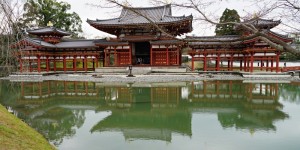 |
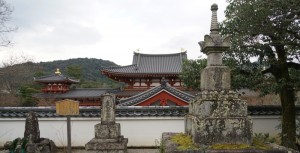 |
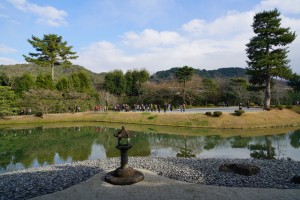 |
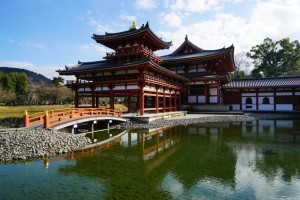 |
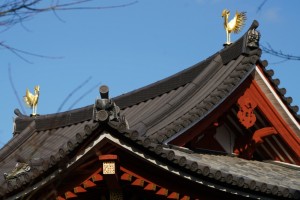 The entrance fee to the garden and museum is ¥600. The garden is not large but the museum is impressive with 52 wooden Bodhisattvas, sculptures and tiles on display. It also desplays national treasures of the Phoenix Hall鳳凰堂built in 1053 where Amitabha Tathagata, head of Gokhuraku is enshrined with two golden phoenix statues perching on the roof. The image of the phoenix is displayed on the ¥10 coin and the ¥10,000 note. The restoration work was completed in 2012. I paid ¥300 to join a guided tour to the hall. Unfortunately, the tour was conducted in Japanese and I gathered she talked about the principal image, the small Buddha figurines, the door painting and the restoration work.
The entrance fee to the garden and museum is ¥600. The garden is not large but the museum is impressive with 52 wooden Bodhisattvas, sculptures and tiles on display. It also desplays national treasures of the Phoenix Hall鳳凰堂built in 1053 where Amitabha Tathagata, head of Gokhuraku is enshrined with two golden phoenix statues perching on the roof. The image of the phoenix is displayed on the ¥10 coin and the ¥10,000 note. The restoration work was completed in 2012. I paid ¥300 to join a guided tour to the hall. Unfortunately, the tour was conducted in Japanese and I gathered she talked about the principal image, the small Buddha figurines, the door painting and the restoration work.
Afterward, I crossed the river and walked to Ujigami Shrine宇治上神社dedicated to the Emperor Ojin and his sons, the imperial princes Uji no Wakiiratsuko and Emperor Nintoku. It’s also a World Heritage property.
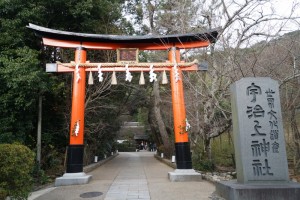 |
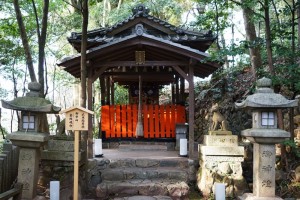 |
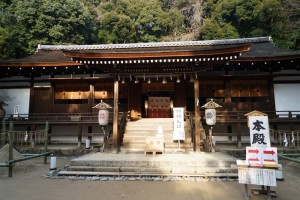 |
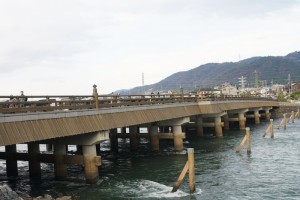 |
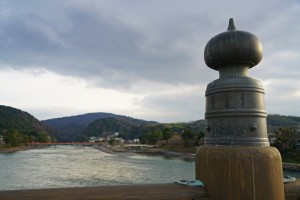 |
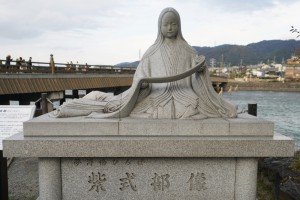 |
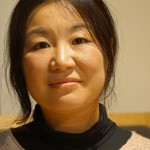 Uji is famous for its tea and dessert. I am not a dessert person and had a bowl of beef rice instead. On my way to the train station, I bought a large grilled fish and udon for less than ¥1,000. I arrived in Nara after 6pm. With a good sense of direction, I found Guesthouse Oku in the dark without problem after walking 20 minutes from the station. My host is a young Japanese lady in her 30s, Yoko who opened the guesthouse since April. There are three rooms with capacity for ten guests. As the other two rooms were occupied, I stayed in the dormitory for ¥3,000: there was no other guest and I had the whole room !
Uji is famous for its tea and dessert. I am not a dessert person and had a bowl of beef rice instead. On my way to the train station, I bought a large grilled fish and udon for less than ¥1,000. I arrived in Nara after 6pm. With a good sense of direction, I found Guesthouse Oku in the dark without problem after walking 20 minutes from the station. My host is a young Japanese lady in her 30s, Yoko who opened the guesthouse since April. There are three rooms with capacity for ten guests. As the other two rooms were occupied, I stayed in the dormitory for ¥3,000: there was no other guest and I had the whole room !
I invited Yoko to share my food and we had a nice time. It was cold. I did not want to turn the heater on. So Yoko gave me a hot water bottle in addition to two warm quilts. I had an excellent sleep!
December 30 Friday: Nara – Kiikatsuura
According to the legendary history of the Kasuga Shrine, a mythological god Takemikazuchi arrived in Nara on a white deer to guard the newly built capital of Heijo-kyo. Since then the sika deer which roam freely in the town especially in Nara Park, have been regarded as heavenly animals, protecting the city and the country.
Nara, the capital of Japan from 710 to 794, is a gem boosting the world’s oldest wooden structures and having more than a half a dozen temples built in Tang Dynasty architectural styles. Eight temples shrines and ruins namely Todai-ji, Saidai-ji, Kofuku-ji,Kasuga Shrine, Gango-ji, Yakushi-ji, Toshodai-ji and the Heijo Palace, together with Kasugayama Primeval Forest collectively grouped as “Historic Monuments of Ancient Nara”, are a World Heritage Site.
I visited Nara briefly during my first visit to Japan in the 1980s. But I can hardly remember anything except the Todai-ji and the Nara Park. This time I decided to visit some of its temples with World Heritage status. I got up early, left the guesthouse by 7am and had a wonderful 6-hour walk visiting three temples and a shrine.
First Stop – Todai-ji 東大寺, the “Great Eastern Temple” and museum (¥800). Founded in the 8th century, the Daibutsu (Great Buddha) Hall housing the massive Vairocana statue, has been burnt down twice. The present structure built in 1700 is the largest wooden structure in the world.
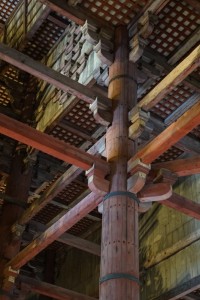 |
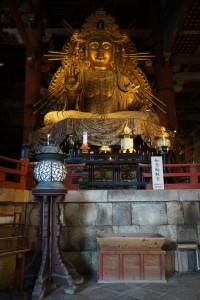 |
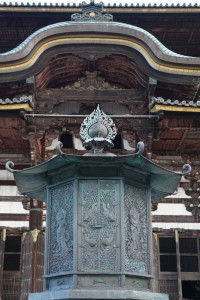 |
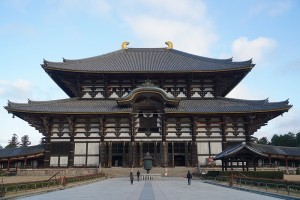 |
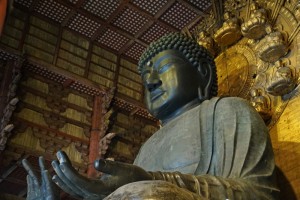 |
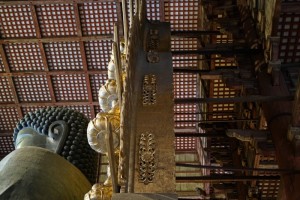 |
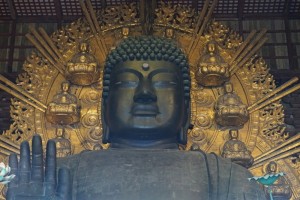 |
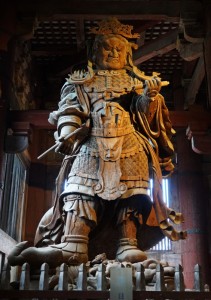 |
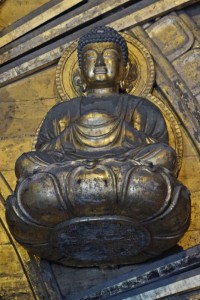 |
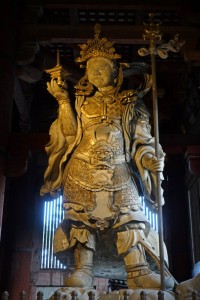 |
I paid ¥500 to enter the Hokke-do also known as Sangatsu-do (Third Month Hall). Constructed in 733, it is the oldest surviving building in the complex. In 740 this hall became site of the first comprehensive lectures on the Avatamsaka Sutra ever held in Japan. This hall houses ten images: in the middle of the hall is Fukukensaku Kannon (362cm) with thousand hands reaching out in every direction to save who are suffering. Behind this statue is the hidden statue of Shukongo-jin which is open to the public once a year on December 16. It is said that the colours of its robes are as bright today as when the hall was founded. The hall is not big but most atmospheric. I sat on the bench for a long while staring at the Fukukensaku Kannon which looks serene, holy and compassionate and the other eight images some of which look lively and fearsome.
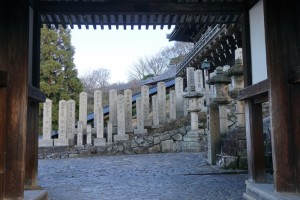 |
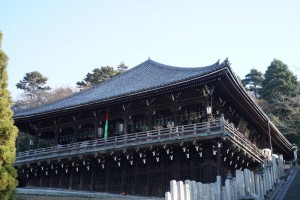 |
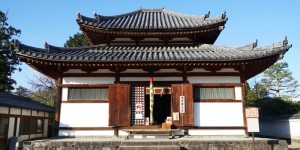 |
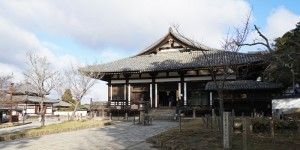 |
Second Stop – Kasuga Taisha Shrine 春日大社. There are two paths leading to the shrine which are lined with some 2,000 stone lanterns. I followed the path from Todai-ji which runs along the foot of the Wakakusayama Hill. Unfortunately as the shrine waspreparing for the New Year celebrations, visitors were not allowed to go in (though some groups were admitted)
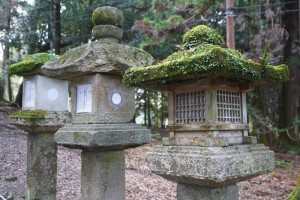 |
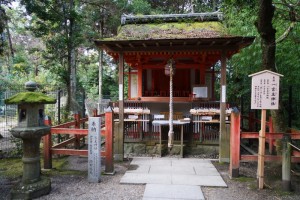 |
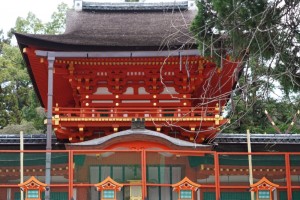 |
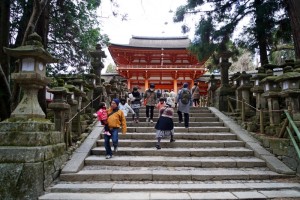 |
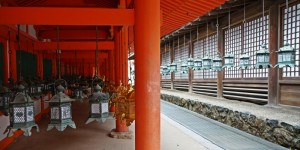 |
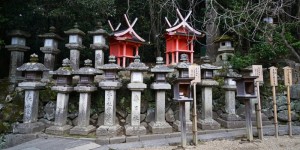 |
I had a lovely walk from the shrine through the Nara Park to the next two stops. My walk also took me through Naramachi, a historic part of Nara with an old-time atmosphere and relaxing feel with few tourists.
Third Stop – Kohfuku-ji 興福寺. First built in 730, the temple complex includes a five-story pagoda which is the symbol of Nara City, a three-story pagoda, a north and south octagonal halls. The Central Golden Hall is currently under reconstruction. I paid ¥500 to visit the East Golden Hall but did not bother to pay extra for the museum.
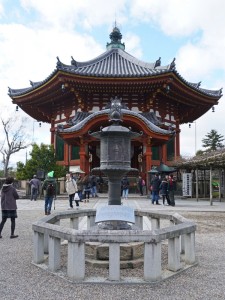 |
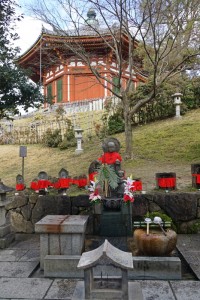 |
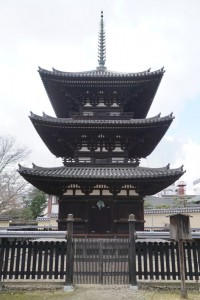 |
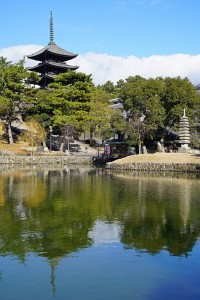 |
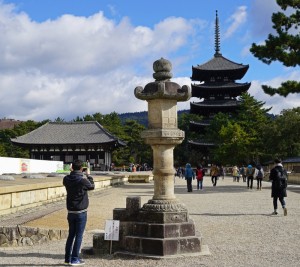 |
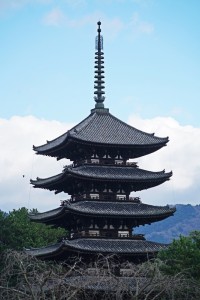 |
Fourth Stop – Gango-ji 元興寺(¥500). This temple, originally founded in Asuka in the 6th century as the first Buddhist temple in Japan, was moved to Nara in 713. It originally had seven halls and pagodas. Today, one can still see several 6th century -roof-tiles used on the roof of the two remaining halls namely the Gokurakubo and Zenshitsu halls.
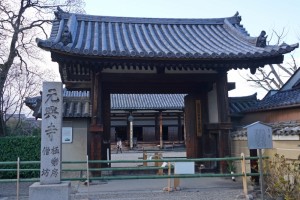 |
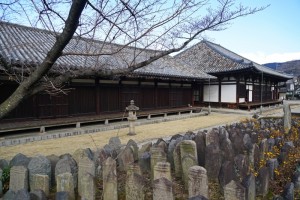 |
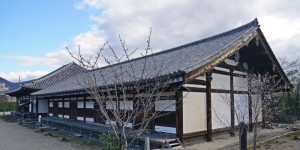 |
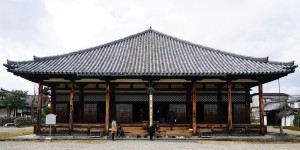 |
Tonight I would be staying in Kiikatsuura (紀伊勝浦). To get there, I had to take the 2:47pm train to Tennoji and then a connecting train at 3:32pm. It’s a long journey and I did not arrive at my destination till 7:15pm. The train was jammed packed and I had to stand for over an hour: I only got a seat after the Wakayama City Station.
Kiikatsuura is a leading tuna fishing port famous for its hot-spring by the seaside and its 17km-long coastline dotted with more than 130 rock formations and islands of different shapes and sizes.
It was dark and I asked a young lady for direction. She then offered to drop me off at Kiikatsuura Onsenminshuku (¥5,170 for a single room with shared facilities – not cheap!). I was very hungry and found a local restaurant where I had a sashimi set for ¥1,400. I also had a beer and a side dish and paid ¥2,500 for a wholesome dinner. Unfortunately, I slept badly that night.
December 31 Saturday: Kumano Nachi Taisha – Kiikatsuura – Kumano Hayatama Taisha – Kawayu Onsen
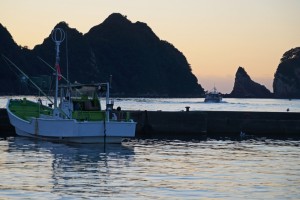 |
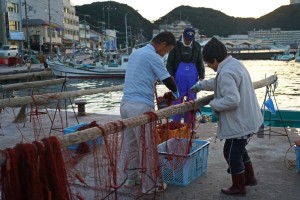 |
I started early by taking the 7:25am bus heading to Nachi Taishan. On the bus, I met a nice Chinese lady who grew up in Japan. She advised me to walk to the shrine through the Nachi Primeval Forest. The 650 metre-long path is lined with gigantic cedar trees some of which are over 800 years old. At the entrance to the slope/path is the Furigase-bashi Bridge which is said to divide the secular world and the shrine. It’s a wonderful spiritual walk with no one in sight.
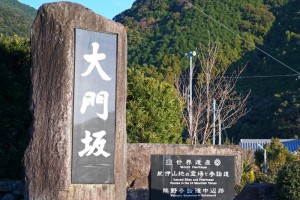 |
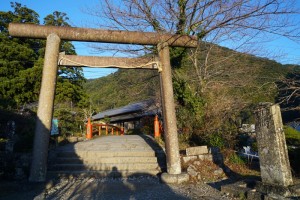 |
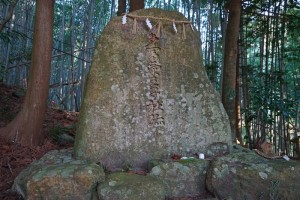 |
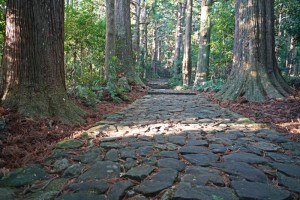 |
The shrine originates from the ancient nature worship of the largest waterfall as its deity called Nachi no Otaki to which the shrine is dedicated.
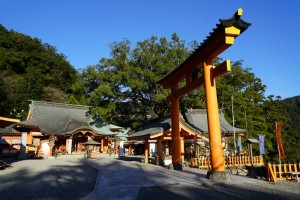 |
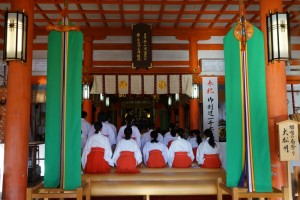 |
It is an example of Buddhist and Shinto syncretism: right next to the shrine is the Seiganto-ji Temple 青岸渡寺, the first of the 33 Temples of Saigoku (Western Japan) Pilgrimage. It is said that in the time of Emperor Nintoku, Kannon appeared to an Indian monk named Ragyo Shonin at the Nachi Waterfall during his spiritual training. He built a thatched hut at the spot and this is the origin of the temple. Between the shrine and the temple is a sacred 850-year-old camphor tree.
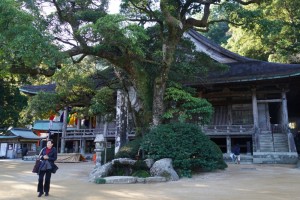 |
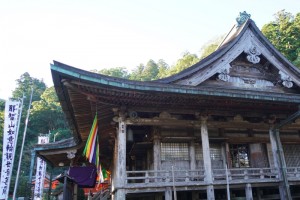 |
I met the lady again in the temple and we walked together to the Nachi Waterfall.
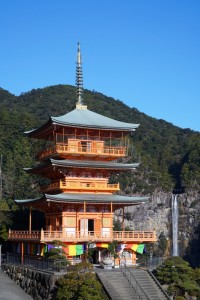 |
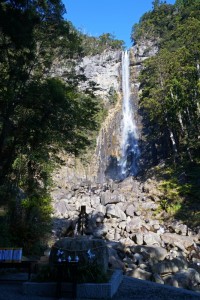 |
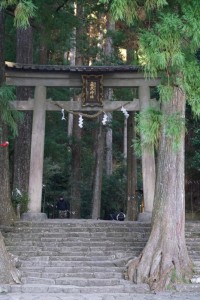 |
We took the 10:10am bus to Kiikatsuura. My friend advised me to get off at the Nachi station to visit the Fudarakusan-ji 補陀洛山寺 known for its priests setting sail to the southern sea searching for the Buddhist Pure Land – Fudaraku Jodo. I did not follow her advice and went to the Nachi beach on the other side of the rail line. I followed the coastline and had a nice stroll along the scenic rocky coast for almost two hours.
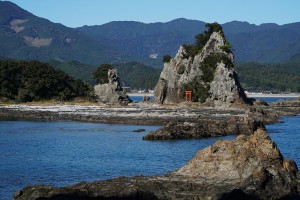 |
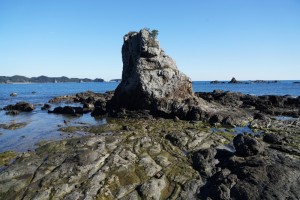 |
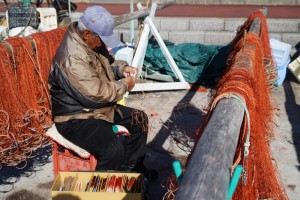 |
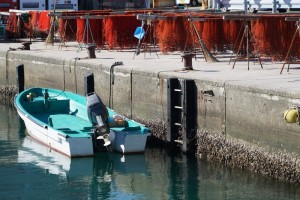 |
I had a nice sashimi set with local rice wrapped in leaves for ¥1,400. Fantastic value ! I took a bus after 1pm to Shingu but had to wait till 3:55pm for the bus heading to Kawayu Onsen 川湯温泉where I had booked a room through Miyo, my Japanese friend. I made good use of time while in Shingu. First, I walked to the Shingu Hase Ryokan to ask the owner to keep my suitcase while I was on the Kumano Kodo. I then took a small backpack with me.
Second, I visited the Kumano Hayatama Taisha situated at the mouth of the Kumanogawa River. The main shrines are built in a straight row with colourful paintings of roosters and other animals decorating the walls.
|
Finally I walked over 2 km to reach the Kamikra-jinja 神倉神社an auxiliary shrine perching high up on a sacred monolith. The path leading to the shrine starts with some uneven and narrow steps. I am a bit scared and climbed up some of the steps with my four limbs. The views of Shingu and the sea from the shrine are fabulous.
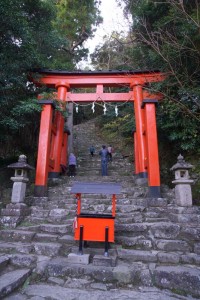 |
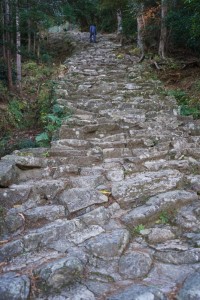 |
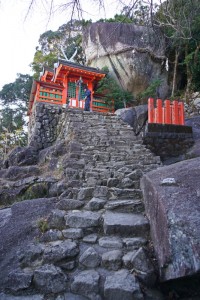 |
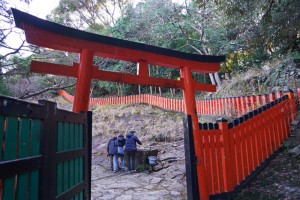 |
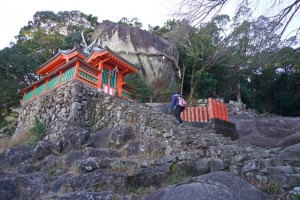 |
I took the bus heading to Kumano Hongu Taisha at 3:55pm and arrived at Kawayu Matsuya Onsen around 5:30pm. I paid ¥8,200 for a basic room without dinner as the restaurant was already full! The two benefits I enjoyed staying in this hotel are the outdoor onsen by the river and the free shuttle to Hosshinmon-oji, the starting point of a 7km hike along the Nakahechi trail to the Kumano Hongu Taisha.
I found a cafe next to the hotel and had a simple dinner with local vegetables and two tiny river trouts. Edible but not delicious! After dinner, I spent half an hour in the outdoor onsen listening to the sound of flowing river and trees blowing in the wind. As there was no celebration in the hotel, I went to bed shortly after 9pm. This is not my dream way to spend New Year Eve.


